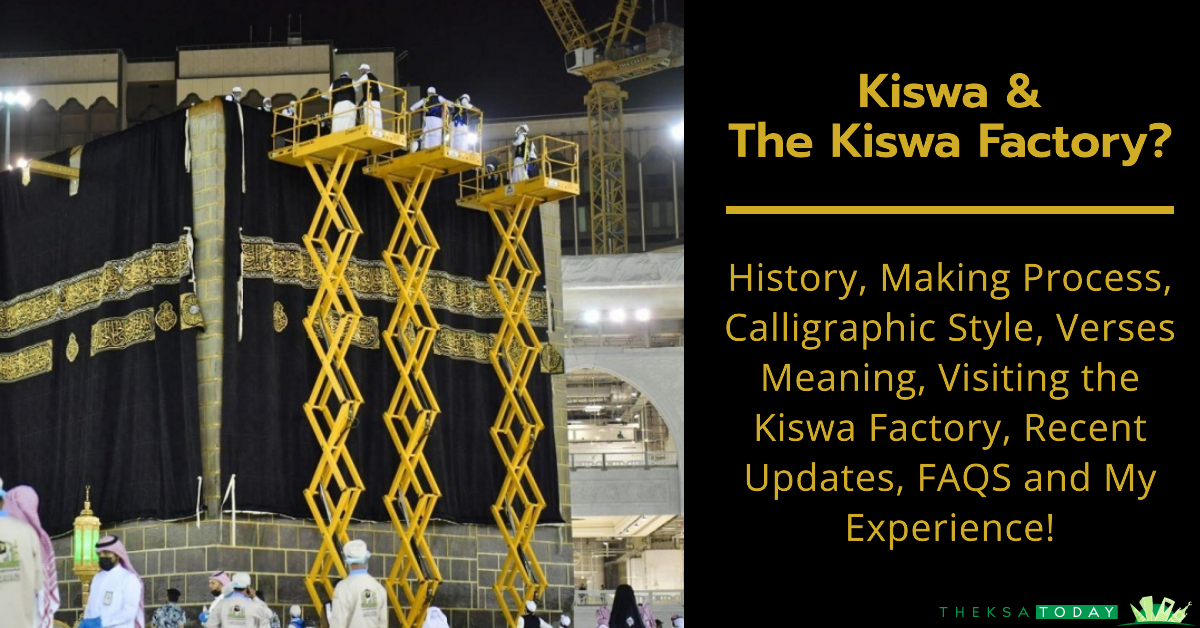As a Saudi Arabia blogger, I’ve explored bustling souks, serene wadis, and the breath-taking sandscapes of the Empty Quarter.
But nothing stirs my soul quite like the Kaaba, the holiest site in Islam.
And what adorns it with timeless elegance?
The Kiswa, of course!
Today, I’m inviting you on a fascinating journey of my experience into the heart of this sacred tradition, the Kiswa Factory with covering everything from top-to-bottom.
What is the Kiswa?
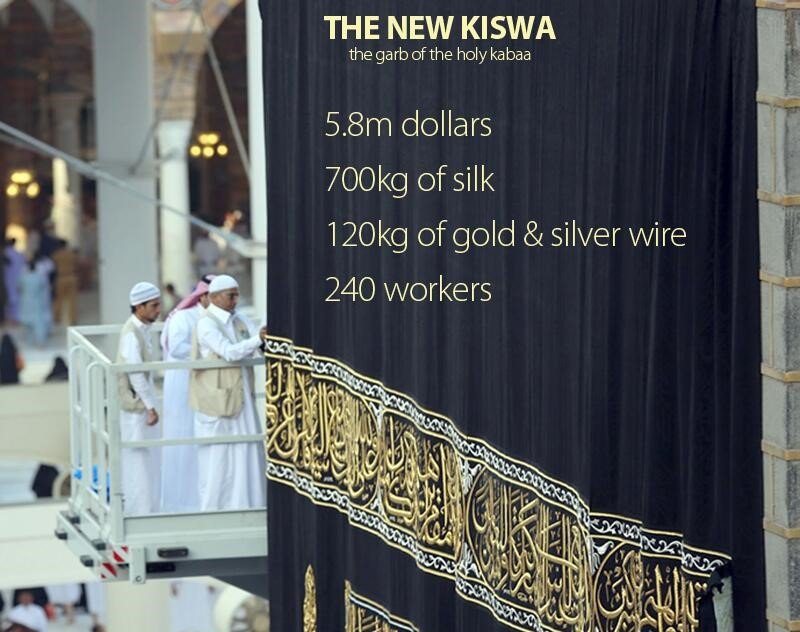
Imagine a magnificent black curtain, adorned with calligraphic verses in shimmering gold, enveloping the cube-shaped Kaaba.
That’s the Kiswa (AKA, Ghilaf-e-Ka’bah), a testament to faith and craftsmanship, replaced annually during the Hajj pilgrimage.
Its outer layer is pure black silk, while the inner lining boasts vibrant green silk.
History of Kiswa
During the Ottoman Empire, this is a rare sight of workers working on the Kiswa (Gilaf e Ka’bah).
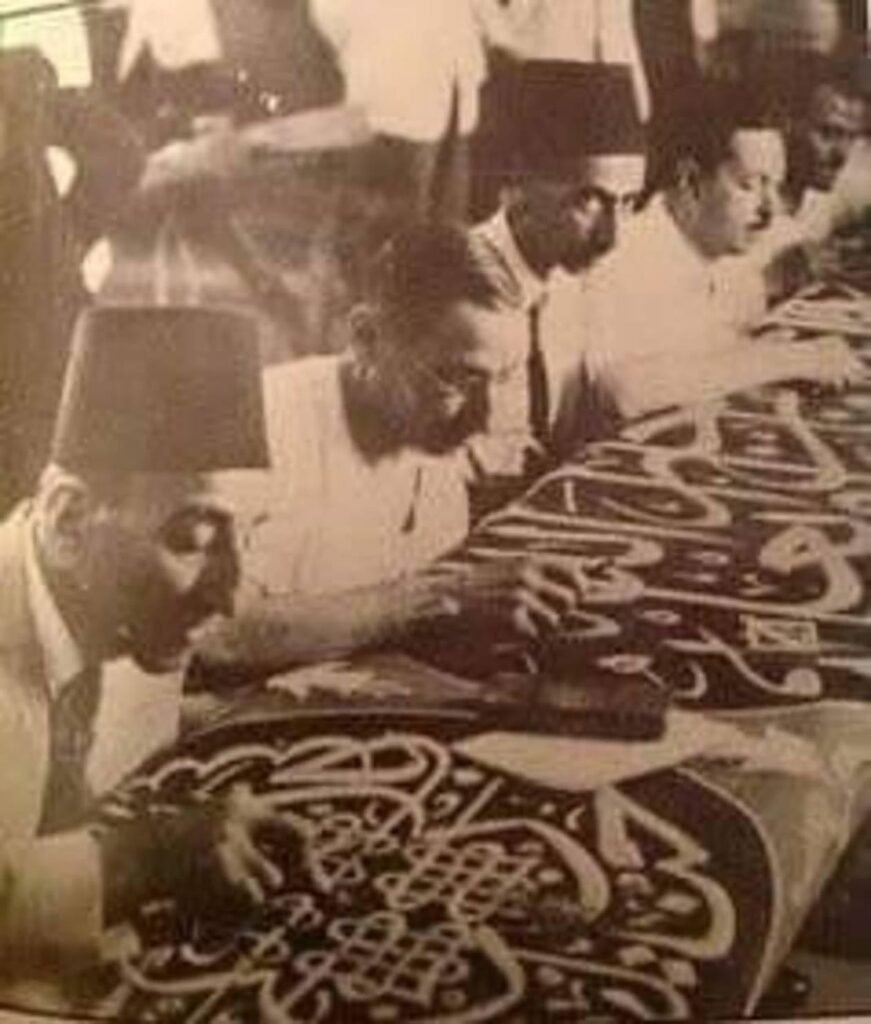
The Kiswa’s story stretches back centuries.
Some say Prophet Ismail (AS) first covered the Kaaba, while others attribute it to his grandfather.
Through the ages, various rulers and communities contributed to its creation, using diverse materials like linen and Egyptian brocade.
In 1927, King Abdulaziz established a dedicated workshop in Makkah, marking the birth of the modern Kiswa Factory.
Also Read: Prophet Adam (A.S): History, Grave, Height, Children & More
The Kiswa-Making Process
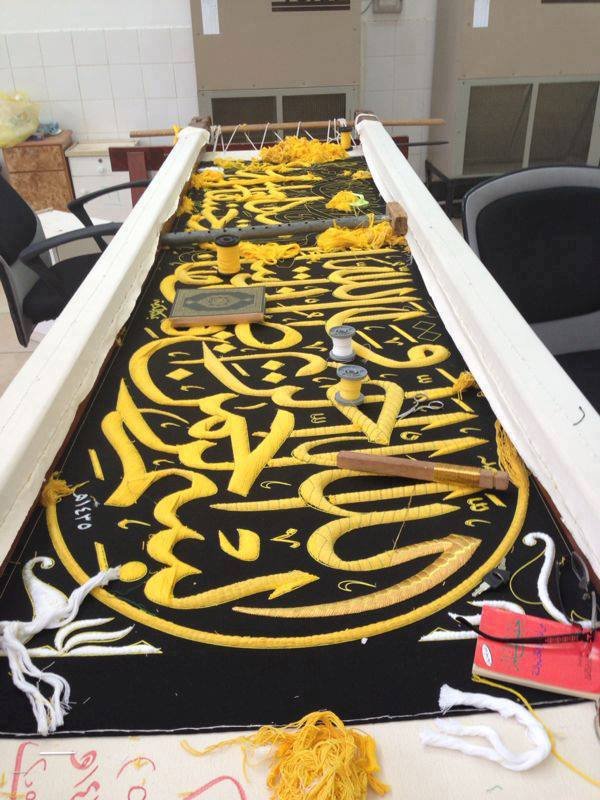
Today, over 240 skilled artisans meticulously craft the Kiswa.
The journey begins with 700KG raw silk, imported from Italy and Switzerland.
It’s dyed, woven into panels on traditional Jacquard looms, and finally, the magic unfolds.
Expert calligraphers, using 120 KG of gold threaded needles, meticulously embroider verses from the Quran onto the black panels.
The process is a symphony of dedication and precision, taking roughly eight months to complete.
Calligraphic Style on Kiswa
The calligraphic style used on the Kiswa is known as Thuluth, characterized by its bold strokes, clear curves, and balanced proportions.
This style provides excellent legibility from afar, ensuring that the pilgrims can easily read the verses even from a distance.
Verses in Golden Threads of Kiswa
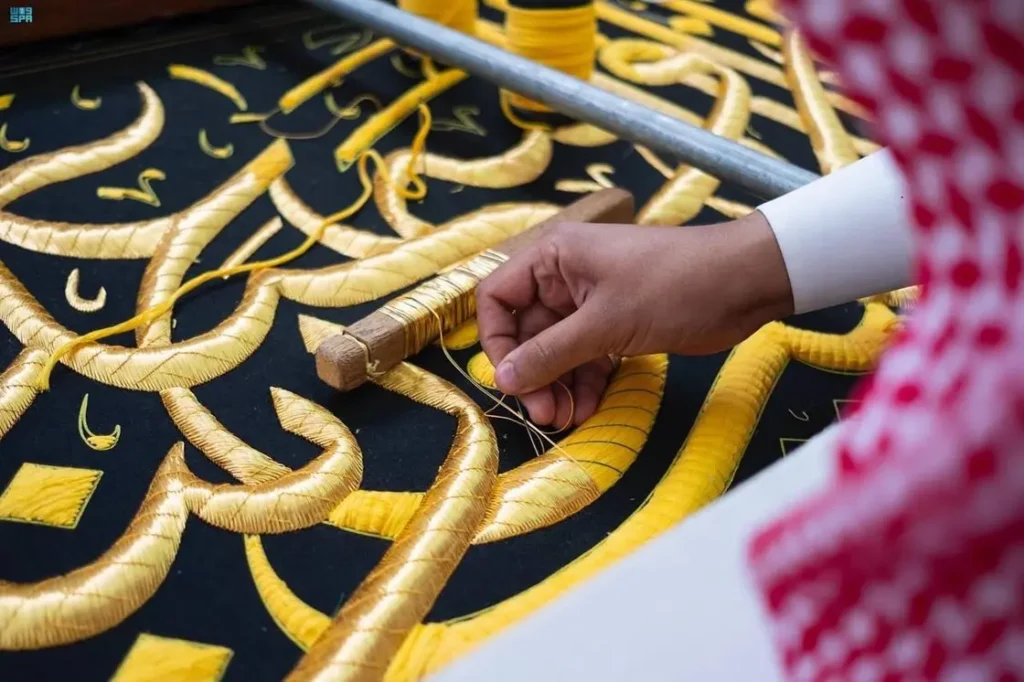
The calligraphy on the Kiswa is more than just beautiful decoration; it’s a powerful declaration of faith and a reminder of the Kaaba’s significance.
The verses chosen are meticulously selected from the Holy Quran, each carrying a deep meaning and resonating with pilgrims throughout their Hajj journey.
The tradition of adorning the Kiswa with Quranic calligraphy has been passed down through generations, ensuring that the messages of faith and unity continue to resonate with Muslims across the world.
As a visitor to the Kaaba, witnessing these verses is an experience that stays with you long after you leave.
Here’s a breakdown of the key verses you’ll find on the Kiswa:
Tawhid
The declaration of Oneness of Allah (SWT) is prominently displayed on the Kiswa, often repeated on various bands.
Verses like these serve as constant reminders of the core principle of Islam;
"Say: He is Allah, One" (Quran 112:1)
"Allah is the Light of the heavens and the earth" (Quran 24:35)
Salawat
Blessings upon Prophet Muhammad (PBUH) are woven into the Kiswa, expressing love and reverence for the Messenger of Allah.
Verses like this adorn the cloth, inviting pilgrims to join in this eternal blessing;
"O you who believe, bless him and salute him with worthy greetings" (Quran 33:56)
Dhikr
Verses promoting the remembrance of Allah (SWT) are scattered throughout the calligraphy, encouraging pilgrims to engage in mindful contemplation and spiritual connection.
The phrase “La ilaha illAllah” (There is no deity except Allah) is a common motif, serving as a powerful reminder of Allah (SWT)’s omnipresence.
Hajj and Umrah
Specific verses related to the pilgrimage rites are also inscribed on the Kiswa, guiding pilgrims and reminding them of the purpose of their journey.
Verses like this, emphasize the importance of this sacred pilgrimage;
"And Hajj to the House is a duty incumbent upon mankind for whoever can undertake the journey" (Quran 3:97)
What is the Kiswa Factory?
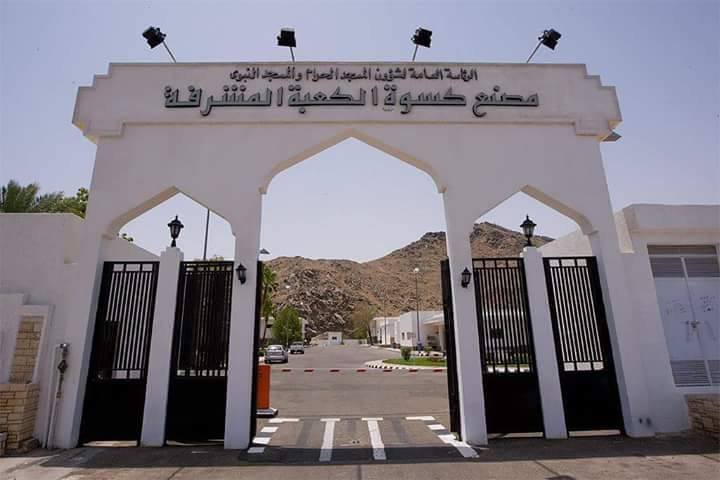
The Kiswa Factory , also known as the Kiswa Weaving Factory, is responsible for producing the Kiswa.
The Kiswa Factory was established in 1977 by the Saudi Arabian government Om Al-Joud, Makkah and it is responsible for designing, manufacturing, and maintaining the Kiswa.
It is a place of immense craftsmanship and precision, where dedicated artisans create this significant piece of fabric that symbolizes the unity of the Muslim Ummah.
Visiting the Kiswa Factory
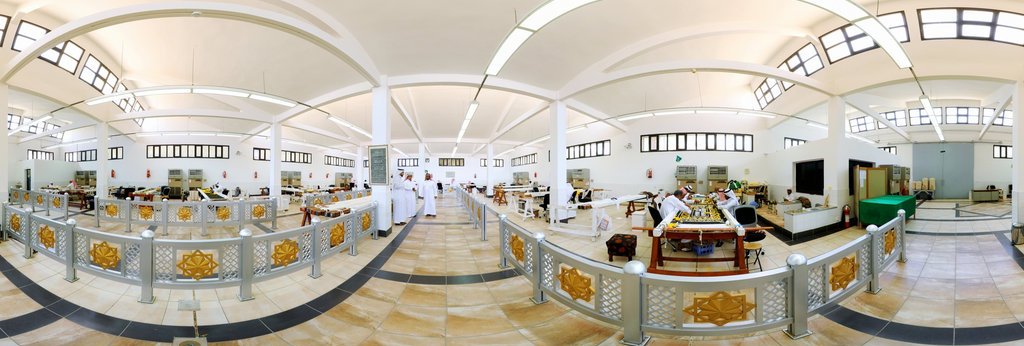
Witnessing this sacred art firsthand is an unforgettable experience.
You’ll see the looms humming, the needles glinting, and the artisans’ faces etched with reverence.
The Kiswa Factory welcomes visitors on specific days, offering guided tours that unveil the intricate steps of Kiswa creation.
Unfortunately, an individual can’t visit, there should be a group of 20 people atleast in order to visit the Kiswa factory.
You need to find a travel agency, they offer tours to Kiswa Factory.
Or, your organization, schools, universities etc. have to take an appointment to visit the Kiswa Factory.
The Story of the Kiswa Door Curtain at the United Nations (UN)
In 1983, the Kingdom of Saudi Arabia presented a portion of the Door Curtain of the Kiswa as a gift to the United Nations (UN) headquarters in New York.
This particular piece wasn’t the entire Kiswa, but a specific section covering the door of the Kaaba.
It was a gesture of goodwill and friendship from the Kingdom of Saudi Arabia towards the UN and its member states.
The Door Curtain is made of pure black silk and is embroidered with verses from the Quran.
It is a beautiful and intricate piece of Islamic art, and it serves as a reminder of the Kaaba’s significance as the holiest site in Islam.
The Door Curtain is currently displayed in the 2nd floor of General Assembly (GA) building at the UN.
It is a reminder that the Kaaba is a sacred site for all Muslims, regardless of their nationality or ethnicity.
Additional details about the Kiswa at the UN
- The Door Curtain is approximately 276 inches (700 cm) long and 126 inches (320 cm) wide.
- It is made of pure black silk that has been dyed with a natural dye called indigo.
- The verses of the Quran that are embroidered on the Door Curtain are from the Surahs Al-Fatiha, Al-Baqarah, and Al-Imran.
Recent Updates on Kiswa Factory
Enhanced visitor experience
The General Presidency for the Affairs of the Grand Mosque and the Prophet’s Mosque has announced plans to expand and modernize the Kiswa Factory’s visitor facilities.
This includes an interactive museum showcasing the Kiswa’s history and production process, along with audio-visual presentations and educational exhibits.
Sustainable practices
The factory is embracing environmentally friendly practices by exploring the use of eco-friendly dyes and minimizing waste during the production process.
This aligns with Saudi Arabia’s broader sustainability initiatives.
Community outreach
The Kiswa Factory actively engages with the local community through educational programs and cultural events.
This fosters a sense of appreciation for this sacred tradition among younger generations.
FAQs
How much does the Kiswa cost?
The exact cost isn’t publicly disclosed, but it’s estimated to be 22,000,000 Saudi Riyals (6 Million USD) due to the high-quality materials and meticulous craftsmanship.
Where is the Kiswa Factory?
Located in Umm Al-Joud, Makkah, the factory stands as a testament to Saudi Arabia’s dedication to preserving this sacred tradition.
Can you buy Kiswa pieces?
Unfortunately, the Kiswa is not commercially available.
Why is the Kiswa black?
While there are various interpretations of the Kiswa’s black color, historical evidence points to a practical reason adopted during the Abbasid era. Its durability and ability to withstand the touch of countless pilgrims from diverse backgrounds made it the optimal choice.
Is the Kiswa made of gold?
The Kiswa cloth is made of Silk, embroidered with Gold threads.
When was Kiswa made in Pakistan?
While historical records mention contributions from various regions, including Egypt in 1817 and 1927 & Pakistan in 1962 at Karachi’s fabric house, currently, the Kiswa is exclusively made in the Makkah factory.
What happens to the old Kiswa?
The old Kiswa is treated with utmost respect. Pieces of the old Kiswa are carefully cut and gifted to dignitaries, museums, organizations and heads of state as a symbol of respect and goodwill.
My Experience at Kiswa Factory
Stepping into the Kiswa Factory was like entering a realm of hushed reverence.
The rhythmic hum of the looms, the glint of needles, and the artisans’ focused expressions – it was a tapestry woven with devotion.
Witnessing the meticulous care poured into each stitch, I felt a deep connection to the millions who have stood before the Kaaba, united under its unifying embrace.
The Kiswa is a story, a testament to faith, artistry, and unwavering dedication.
And that’s my story of the Kiswa Factory, a tale woven with history, craftsmanship, and the unwavering spirit of devotion.
I hope it leaves you with a newfound appreciation for this sacred tradition and a desire to explore its deeper meanings.
As always, happy travels and keep exploring the treasures of Saudi Arabia!
